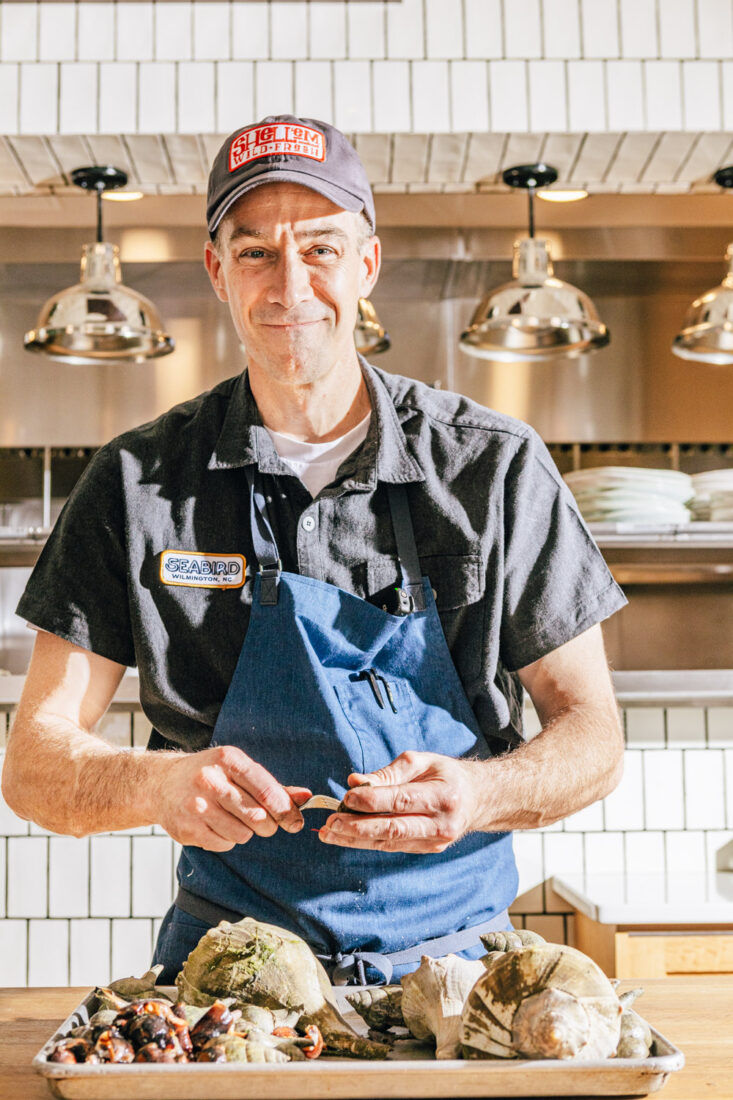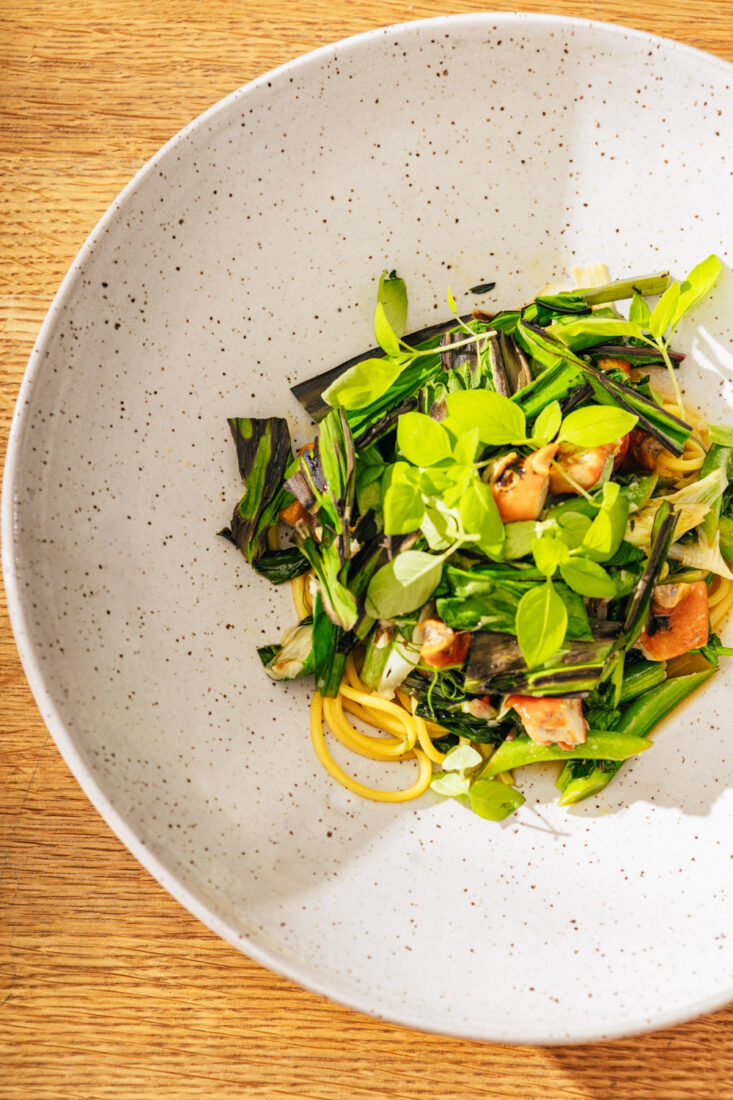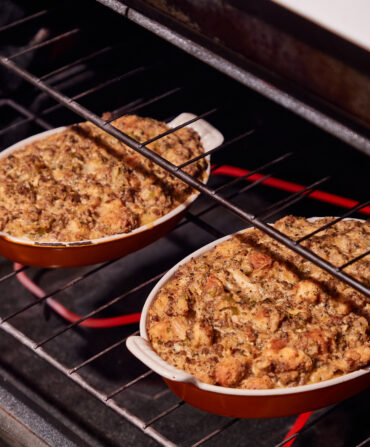At Seabird, an oyster bar and seafood spot in Wilmington, North Carolina, chef Dean Neff will take whatever his shellfish supplier brings him from the nearby marshes: oysters, of course, along with razor clams, stone crab claws, lighting whelks, ribbed mussels, a seaweed called dead man’s fingers, and most recently, a new-to-him ingredient called tulip snails. “They’re something I can’t believe I’m now learning about,” Neff says of the predatory marine snails. “They are just so fun.”

Neff’s supplier is Ana Shellem, an aptly named, one-woman foraging show, who started finding tulip snails at low tide a few months ago in the brackish marshes of Masonboro Island just five miles from Wilmington. Once the delicacy arrived at Seabird’s door, Neff and his chef de cuisine, Jay Jones, went to work extracting, cleaning, and bathing them in an aromatic broth to keep them from toughening. “We used the same technique of cooking them as we do with lightning whelk, something else Ana brings us,” Neff says. “But the tulip snails are more tender, a little bit sweeter than whelk, much smaller, and easier to get out of their shells.”

First, the duo put the snails—whose flavor and texture Neff likens to a cross between razor clam and lobster—in a pasta dish alongside Calabrian chili peppers, fresh herbs, garlic, summer beans, and field peas. They even arranged the beautiful spiral snail shells on the side of the plate. “We wanted a simple approach to really allow people to experience them,” Neff says. “We consistently sold out of that dish because people were so intrigued.” Tulip snails also make an appearance on the restaurant’s seafood tower, or come poached, tossed with a vinaigrette and finished with a touch of ramp aioli. Next, Neff wants to pop them in his take on a classic cioppino, add them to a Lowcountry boil, and use them for a stew or chowder.
As it turns out, tulip snails aren’t all that novel of a menu item, at least locally. “Not long after I first learned about them, my wife and the kids were at the Cape Fear Museum, and she texted me a picture of this display of tulip snails that showed how they have been a food source in this area historically,” Neff says. “I love that we are able to bring them back now, give people an experience that is so unique and so much about a sense of place.”

Much of Seabird’s menu channels that same philosophy. Raw oysters hail from Topsail Sound or Hatteras Island; baked, they are topped with seasonal ramps, cornbread crumbs, and Benton’s bacon. Soft-shell crab and crispy smoked catfish hail from in state, too. And many of Neff’s favorite dishes star ingredients from Shellem, who spends her days wading through the marsh and loves to see how local chefs use the bounty. “I don’t know what we would do without people like Ana bringing in things like these tulip snails,” Neff says. “Without her work, we wouldn’t have this experience, or this connection to an ingredient.”








